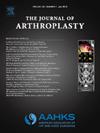Basics of Orthopaedic Commercial and Government Bundling
IF 3.4
2区 医学
Q1 ORTHOPEDICS
引用次数: 0
Abstract
Background
The health care system is transitioning from fee-for-service models to value-based care frameworks, with bundled payments emerging as a promising approach to improve cost efficiency and patient outcomes. Bundled payments consolidate costs for multiple services into a single payment for specific treatments or conditions. This study reviews the development and implementation of bundling models in orthopaedics, comparing government and commercial approaches and discussing their benefits and challenges.
Methods
A review of the literature was conducted to examine existing bundling programs in orthopaedics, including Medicare initiatives like the Bundled Payments for Care Improvement and Comprehensive Care for Joint Replacement model, as well as commercial programs from insurers such as Cigna and UnitedHealthcare. The review focused on published studies, reports, and case examples to identify trends, outcomes, and barriers associated with these models.
Results
Government programs such as Comprehensive Care for Joint Replacement have demonstrated improved care coordination and cost control but face challenges in engaging physicians and aligning financial incentives. Commercial models, with greater flexibility in their prospective payment structures, allow for customization and better financial predictability but require careful negotiation and compliance with quality metrics. Both approaches highlight the importance of robust data management, multidisciplinary collaboration, and innovative partnerships to improve care delivery. Condition-based bundling, though conceptually aligned with value-based care, remains in its early stages within orthopaedics.
Conclusions
Bundled payment models represent a key strategy for advancing sustainable and efficient health care delivery in orthopaedics. Despite challenges like stakeholder alignment and resource demands, these models offer potential to enhance care quality and reduce costs. Future directions should prioritize collaboration, technology integration, and the resolution of implementation barriers to fully realize the benefits of bundling in orthopaedic practices.
矫形外科商业和政府捆绑基础知识。
背景:卫生保健系统正在从按服务收费模式向基于价值的护理框架过渡,捆绑支付作为一种有希望提高成本效率和患者治疗效果的方法出现。捆绑支付将多种服务的费用合并为针对特定治疗或条件的单一支付。本研究回顾了骨科捆绑模式的发展和实施,比较了政府和商业模式,并讨论了它们的好处和挑战。方法:对文献进行回顾,以检查骨科现有的捆绑计划,包括医疗保险计划,如护理改善捆绑支付和关节置换综合护理模式,以及Cigna和UnitedHealthcare等保险公司的商业计划。本综述着重于已发表的研究、报告和案例,以确定与这些模型相关的趋势、结果和障碍。结果:政府项目,如关节置换术综合护理,已经证明改善了护理协调和成本控制,但在吸引医生和调整财政激励方面面临挑战。商业模式在未来的支付结构中具有更大的灵活性,允许定制和更好的财务可预测性,但需要仔细协商并遵守质量指标。这两种方法都强调了强大的数据管理、多学科合作和创新伙伴关系对改善医疗服务的重要性。基于条件的捆绑,虽然在概念上与基于价值的护理一致,但在骨科中仍处于早期阶段。结论:捆绑支付模式是促进骨科可持续和高效医疗服务提供的关键策略。尽管存在利益相关者协调和资源需求等挑战,但这些模式提供了提高护理质量和降低成本的潜力。未来的方向应优先考虑协作、技术集成和解决实施障碍,以充分实现骨科实践中捆绑的好处。
本文章由计算机程序翻译,如有差异,请以英文原文为准。
求助全文
约1分钟内获得全文
求助全文
来源期刊

Journal of Arthroplasty
医学-整形外科
CiteScore
7.00
自引率
20.00%
发文量
734
审稿时长
48 days
期刊介绍:
The Journal of Arthroplasty brings together the clinical and scientific foundations for joint replacement. This peer-reviewed journal publishes original research and manuscripts of the highest quality from all areas relating to joint replacement or the treatment of its complications, including those dealing with clinical series and experience, prosthetic design, biomechanics, biomaterials, metallurgy, biologic response to arthroplasty materials in vivo and in vitro.
 求助内容:
求助内容: 应助结果提醒方式:
应助结果提醒方式:


